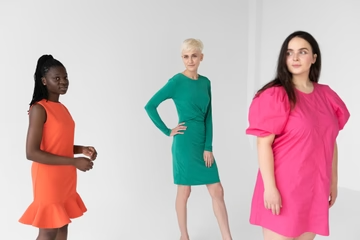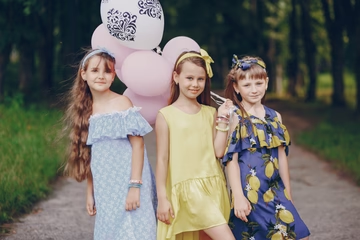Color plays a significant role in how people represent themselves, and wholesale women’s clothing is known for having a wide range of colors. Choosing colors for clothing collections can make or break a brand. By selecting the right colors, the brand's identity can be enhanced, the target audience will be interested, and there will be a chance to create a cohesive collection that stands out in the crowded fashion industry.

Importance of Color in Fashion and Clothing
Choosing colors for clothing has always been an important aspect of our lives as they are utils to represent the emotional state of a person. They significantly impact how people perceive and respond to clothing, as well as the overall success of a brand.
Due to these, a color is a powerful tool in fashion and clothing that can be used to create a brand identity, convey a message, and connect with customers. Since color trends are constantly changing in the fashion industry, staying up-to-date on popular colors and incorporating them into the designs can help keep the brand relevant and on-trend.
Understanding Color Theory in Fashion
Color theory is the study of how colors interact with each other and how they can be used to create pleasing and harmonious color combinations since one color does not look the same under different lighting, color combinations, or on different skin tones.
Understanding color theory is essential for creating visually appealing and cohesive collections in fashion. To master color theory for choosing colors for clothing, understanding the hue, saturation, warmth, or coldness of color, value, and harmony between colors is a must.
Color Wheel and Color Schemes
The color wheel shows the relationships between colors. It is a circular diagram that shows the primary, secondary, and tertiary colors and how they are positioned in relation to each other. Color schemes refer to the different ways that colors can be combined to create a harmonious and visually appealing color palette.
These two significantly impact the decisions of brands in choosing colors for clothing. There are several types of color schemes, each with its own unique characteristics and intended effects. Some of the most popular and preferred color schemes are monochromatic, triadic, and analogous.
Color Psychology
Color psychology is the study of how colors can affect human emotions, behavior, and perceptions. It can play a significant role in choosing colors for clothing brands and what type of feeling a brand wants to convey to its customers. In fashion, understanding color psychology is important for creating collections that resonate with customers and convey the desired message or mood.
There are some common associations between colors and emotions. For instance, red is the color of anger or passion; blue is sadness and calm; yellow is youth and warmth, etc. The influence of color psychology on fashion choices is undeniable and should not be overlooked.
Factors to Consider When Choosing Colors for Your Collection
There are various crucial factors to focus on while determining and choosing colors for clothing brands for women. When choosing colors for a fashion collection, designers should consider several factors to ensure that their choices are appropriate for their target audience and effectively communicate the desired message or mood. These factors include the target audience, seasonal trends, versatility, and timelessness.
Target Audience and Demographics
One of the most important factors in choosing colors for clothing brands is to understand the brand's target audience. One important aspect of the target audience is demographics, which refers to characteristics such as age, gender, income level, education level, occupation, and geographic location.
By analyzing these demographics, fashion designers can gain insights into their target audience's lifestyle, values, and preferences and tailor their collections accordingly.
Seasonal Trends and Influences
Another important factor in choosing colors for clothing is to understand seasonal trends and at times, be able to set those trends. Seasonal trends and influences play a significant role in fashion, as they help fashion designers create collections that are relevant and appealing to customers during a particular time of the year.
Factors like holidays, weather, and pop culture affect the designs of seasonal garments more than anticipated. Popular colors for different seasons, such as shades of brown for autumn and bright colors for spring, will also affect the overall design of garments.
Versatility and Timelessness
Timelessness and versatility are also crucial factors in choosing colors for clothing brands, as only some customers will be looking for something trendy. Many people are interested in timeless and versatile pieces, especially if they are going to invest in a garment to have it for the long term.
Incorporating versatility and timelessness requires careful consideration of factors such as fabric, color, style, and design and understanding the target audience and their preferences. Garments in colors that can be easily combined with other colors, such as black or shades of brown, will be accepted as timeless and versatile rather than yellow garments.

How to Create a Cohesive and Balanced Color Palette?
Creating a cohesive and balanced color palette requires an eye for aesthetics and balance. It is an essential and crucial part of the design process and shows the importance of choosing colors for clothing. Key aspects of a balanced color palette are to have a dominant color and have colors that complement and combine well with that dominant color.
Understanding the popular colors and considering the theme and mood will also benefit in creating a balanced color palette. By following these steps, fashion designers can create a cohesive and balanced color palette that enhances the overall aesthetic of the collection and appeals to the target audience.
Incorporating Patterns and Prints into Your Collection
Incorporating patterns and prints in a collection is also difficult, but it can add texture, interest, and personality to the designs. Patterns and prints have to be balanced with solids to prevent the collection from looking too loud, as too many patterns will look too complicated and even look like a mess.
Choosing the correct patterns and prints is especially important in wholesale blouse models, as the print and patterns can make or break a garment. Selecting designs and prints that complement the colors and fabrics used in the collection and considering the size and scale of the patterns, as well as the style and motif, are important to make an appealing-looking garment.
You can read our previous article at https://istanbulfashioncenter.com/blogs/news/textile-fairs-in-the-uk














